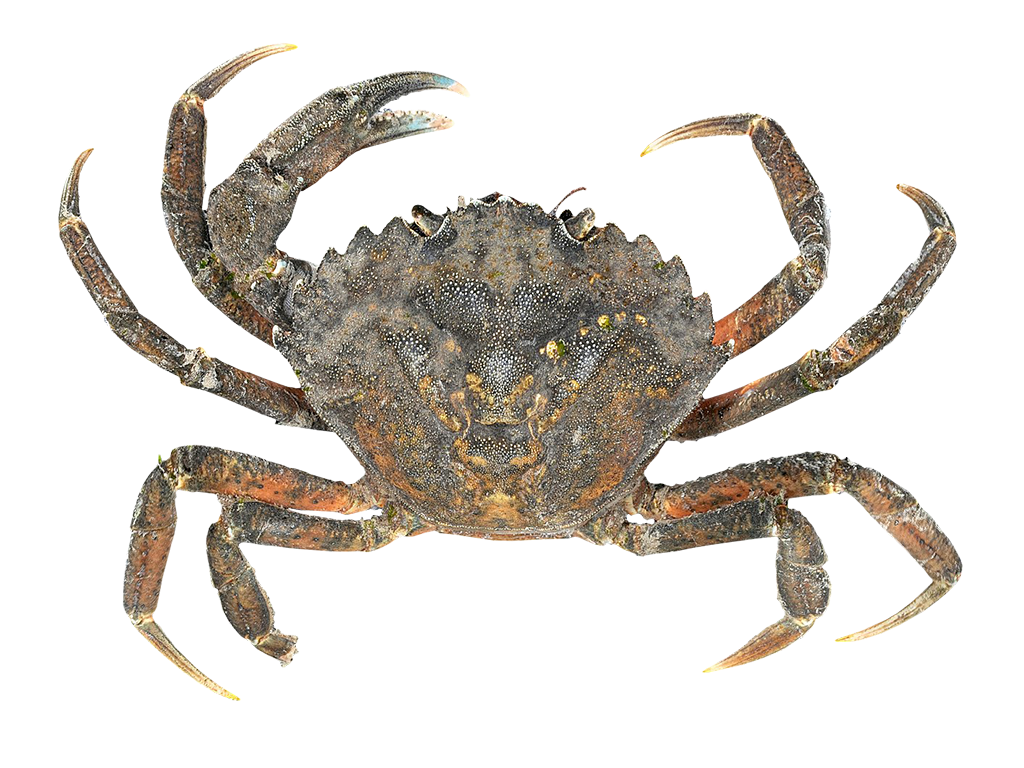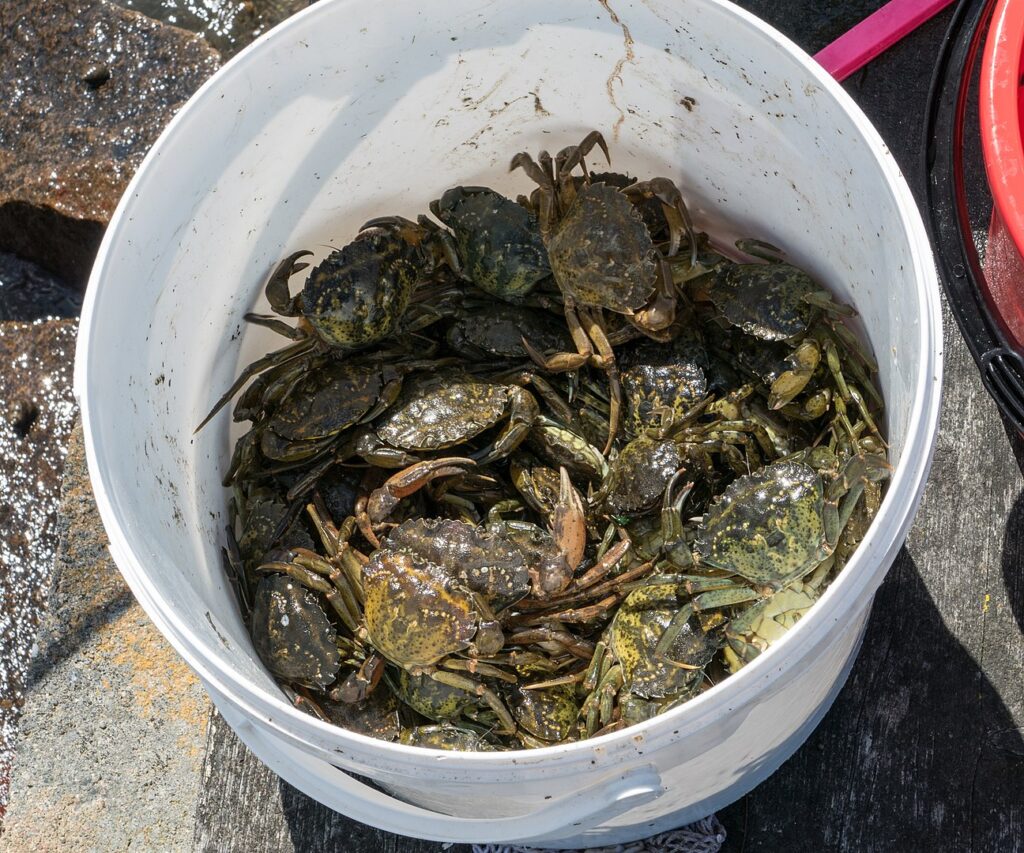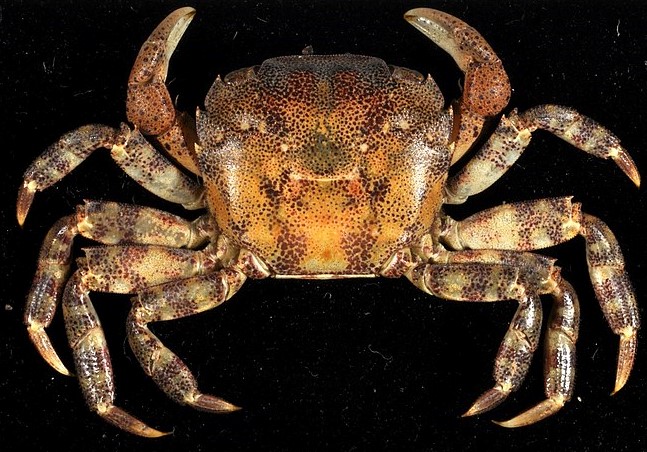Shore Crab
Carcinus maenas

Our most common crab – a threat in other places
If you have ever caught crabs from a jetty in Sweden, it is most likely shore crabs that you have caught. The shore crab is native to Sweden and western Europe, but it is regarded as a problem in other parts of the world. It has spread with ships to places like the United States and Australia, where it threatens the local wildlife.

The Japanese shore crab – a threat in Sweden
Another crab, the Japanese shore crab, has begun to spread along the Swedish West Coast. It is native to East Asia, but here it threatens our native European shore crab. It is important not to move animals from where they belong!

Can breathe air
At night, the shore crabs are more active in their search for food. They prefer to stick close the shoreline and can also breathe air for shorter periods, as long as their gills stay wet. During the winter, shore crabs prefer to stay buried in the seabed, under the bottom material. It is warmer there than in the open water.
Shore crabs can breathe air as long as their gills are kept moist.
Shore crabs are also found under water.
Photo: Lars-Behnke-CC-BY-SA
Sheds its shell to grow
The shell of the crab cannot grow, so in order to grow the crab sheds its shell. It crawls out from its old shell and hides while the new, bigger shell hardens around its body. You can tell males and females apart by looking at the shape of their tail, which is pressed up under the crab’s belly. The tail of the female is much wider than that of the male. This is because the female carries the eggs under her tail – the wider tail protects the eggs.
A female shore crab carries her eggs under her tail.
Photo: Auguste-Le-Roux-CC-BY
An illustration of a shore crab larvae.
Distribution in Sweden
In the Baltic Sea up to Uppland. From Öresund up along the entire West Coast.

Threat based on the Red List

Trade regulations
CITES: Not listed.